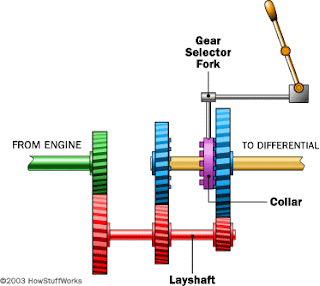probably not a F1 part as such, but the concept is the same.
the part on the left is called a "dog ring"

function in principle (here they call it a collar - pink part)

These parts, are unlikely to get damaged due to driver error or driving style these days in F1. It can be a part or assembly failure as well as a software problem (wrong shift strategy etc.)
driving over curbs, or in a way that causes excessive load changes can damage a gearbox. But in this case it´s more often a shaft (input shaft) failure, then a gear or dog ring failure. As rapidly changing loads, such as landing with a wheel after a curb hop, will cause shock loads in the drivetrain, which can lead to torsional overload and oscilations of/in the shafts (especially driveshafts as well).
But I would assume, that the parts are designed with these loadcase in mind, and you used to "beef up" some parts for a road course such as Monaco in the past.
If the design is borderline to start with, a driver could push it over the limit.
But I don´t think, that this is/was the case with L.H. g/box today.
It´s more of an McLaren quality control issue, then a driver issue in this case - IMHO
It does poses some challenges, particular in rallying and off road racing (landing after jumps) in terms off gearbox/drive train design






